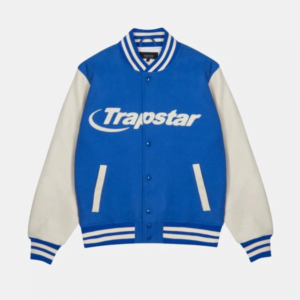
Trapstar is not just a streetwear label — it’s a cultural movement. What started as a small-scale operation in West London has grown into an international brand, respected not only for its bold aesthetics but for its deep connection to youth identity and urban culture. At the heart of this movement lies the Trapstar jacket: a piece of outerwear that has come to symbolize more than warmth or style. It’s a reflection of mindset, attitude, and community. For many young people, Trapstar represents more than fashion — it represents who they are.
A Brand Built on Belonging
Founded in the early 2000s by Mikey, Lee, and Will, Trapstar was built on authenticity. The brand’s slogan, “It’s a Secret,” spoke volumes — a quiet nod to those in the know, and a message that the brand wasn’t made for mass approval. It was built by and for a community that felt overlooked by the mainstream: young people navigating complex social realities, using music, art, and fashion to express who they are.
Trapstar jackets quickly became a staple of this identity. Worn by artists, creatives, and everyday youth across London, the jackets were loud, defiant, and empowering. They weren’t just clothes — they were armor in a world that often judged or misunderstood them. By wearing Trapstar, young people aligned themselves with a shared experience — of struggle, ambition, and self-belief.
The Rise of the Streetwear Uniform
For many urban youth, streetwear is more than a fashion choice — it’s a language. Trapstar speaks that language fluently. Its jackets, often oversized and heavily branded, channel energy from both hip-hop and grime cultures. The popularity of these styles isn’t just about trend; it’s about visibility. In a world where mainstream fashion rarely reflects their lives, Trapstar offers young people the opportunity to see themselves represented — boldly, unapologetically, and stylishly.
Trapstar jackets are loaded with meaning. The use of military-inspired elements, reflective designs, and the now-iconic “Decoded” graphics all reflect a kind of street wisdom — a knowledge of both survival and success. For many wearers, these jackets aren’t simply purchased items; they’re investments in identity, pride, and power.
Music, Culture, and Co-Signs
A big part of Trapstar’s influence comes from its close relationship with music. Artists like Stormzy, Dave, Central Cee, and even global names like Rihanna and Jay-Z have all been spotted in Trapstar jackets. These co-signs do more than boost the brand’s credibility — they reinforce its cultural relevance. When a young fan sees their favorite artist rocking a Trapstar puffer, it doesn’t just suggest style — it signals alignment with a mindset and a movement.
This cultural synergy has helped turn Trapstar jackets into a badge of honor. They say, “I’m part of this.” They signal an understanding of street culture that goes beyond surface-level fashion. And as music continues to drive trends globally, Trapstar’s position at the intersection of sound, style, and identity gives it a lasting impact far beyond a seasonal look.
Empowerment Through Aesthetic
One of Trapstar’s greatest strengths is its ability to empower. Its jackets are designed to feel strong — padded, structured, layered, and bold. They offer more than protection from the elements; they project confidence. For young people dealing with uncertainty, social pressure, or invisibility, putting on a Trapstar jacket can feel like stepping into a new version of themselves — one that commands respect.
This sense of empowerment is critical in communities where opportunities can feel limited and social mobility constrained. Fashion, in this context, becomes a form of resistance — a way of taking control of your image and asserting your worth. Trapstar, through its outerwear, has given young people a tool to do just that.
The Legacy of Influence
Trapstar’s influence on youth fashion and identity is no accident. It is the result of a brand staying true to its origins while evolving with its audience. Its jackets have become more than a trend — they are cultural artifacts that represent a shift in how young people see themselves, and how they demand to be seen.
As new generations step into the world with bold ideas and unapologetic style, brands like Trapstar will continue to matter. Because it’s not just about looking good — it’s about being heard, seen, and understood. And for many, that journey starts with something as simple — and powerful — as a jacket.
Comments on “More Than a Jacket: Trapstar’s Influence on Youth Identity and Fashion”